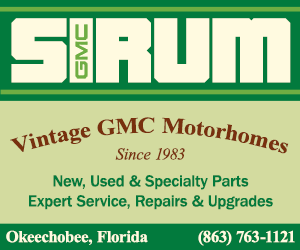1973-1978 GMC Motorhome: General Motors’ Grand RV Experiment
GM’s excursion into the recreational vehicle market in the 1970s may not have been a money maker for the automaker, but it produced some impressive and memorable machines. Here’s a brief look at the GMC motorhome.
Scroll to the bottom for some fun and interesting videos!
In 1970, General Motors planners saw an opportunity in the growing recreational vehicle market and began to lay plans for a factory-built motorhome that was formally introduced to the public in January 1973. Seldom have the full engineering and manufacturing resources of a global automaker (here, led by GM’s GMC Truck and Bus division) been applied to a consumer motorhome, and the resulting vehicle made an impressive statement, even if it wasn’t a money-making commercial success for General Motors.
The GMC motorhome was offered in both 23-ft. and 26-ft. models, with five or more available floor plans for each version, creating a variety of useful seating and sleeping possibilities. Exterior body panels were fiberglass and aluminum, supported by an aircraft-like framework of extruded aluminum. The strong, light construction produced a 10,500-lb. gross vehicle weight rating for the 23-footer and a 12,500-lb. rating for the 26-footer. Michael Lathers, chief of the GM Design Center, is credited for the exterior design.
A conventional steel ladder frame formed the motorhome’s chassis, supporting a front-drive Olds Toronado powertrain module up front and tandem wheels with independent air suspension at the rear.
The 23-ft. model rode on a 140-inch wheelbase, while the 26-ft. version employed a 160-in. wheelbase.
One 30-gallon fresh water tank and one 30-gallon waste tank were provided, along with two 25-gallon fuel tanks.
As noted above, the front-drive powertrain module, including the 455 CID V8, Turbo Hydramatic 425 automatic transmission, and torsion-bar front suspension, was taken whole from the Oldsmobile Toronado, producing a tidy and efficient package. Owners reported decent road performance and fuel consumption in the 9 to 11 mpg range. When the 455 CID Olds V8 was downsized to 403 CID for 1977, the motorhome was forced to follow along, so the ’77 and ’78 models are equipped with the smaller V8. The Toronado drivetrain also allowed a low, sleek body and chassis height.
Transmission: Turbo-Hydramatic three-speed automatic gearbox driven by the engine via a wide roller chain. The gearbox and differential were integral and drove the front wheels by double-jointed half-shafts.
A wide variety of exterior and interior decorating themes were offered, with names including Palm Beach, Eleganza, and Canyonlands. There’s no missing the ’70s flavor of this exercise in avocado called Sequoia, shown here viewing from the front rearward. The bold themes were in part driven by GM President Ed Cole’s call for bright, cheerful colors for the project.
This more subdued interior theme for 1977 was called the Kingsley, shown here looking forward toward the driver’s seat. GM product planners envisioned mobile office and showroom applications for the motorhome platform, but the company never got around to offering specific models for commercial use.
After six model years in production, GM’s foray into the RV business was canceled on November 11, 1977, at the end of the 1978 model year. When General Motors ceased building the large Toronado, they also ceased building the large-block Toronado drivetrain, so there would no longer be a drivetrain for the GMC Motorhome. The manufacturing facility at GMC’s Pontiac, Michigan plant was eventually returned to a truck and bus assembly.










